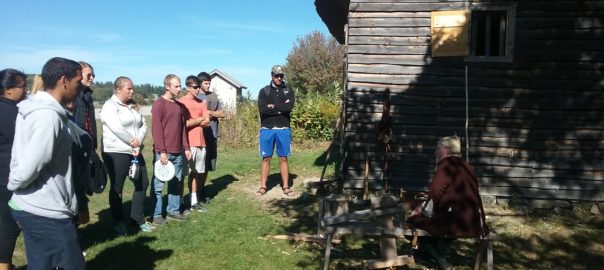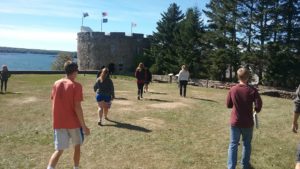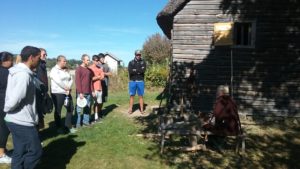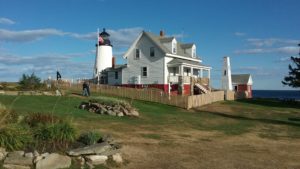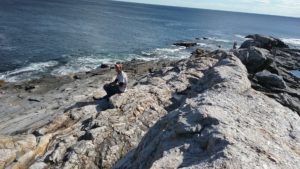The Pemaquid peninsula is not only a beautiful place to study coastal marine ecology, it is also a place rich with the history of colonial New England and the fishing and seafaring communities that settled here. We took a short break from intensive writing sessions to enjoy a few hours exploring this history on a beautiful autumn afternoon.
We visited Fort William Henry and the Colonial Pemaquid Restoration, at the entrance to the inner Pemaquid harbor. This site was once an important fishing outpost, and as a trading center, protected by the British colonists with a series of forts. Each fort succumbed to French or native raiders, who would also lay ruin to the adjacent village. From 1635 to the 1790s, the fort and village were settled, razed, and resettled numerous times. The end of the French and Indian wars and the American Revolution brought an end to the need for a fort, and the village declined in importance relative to other regional settlements – but this site preserves the rich history of early colonial days and the rough life of a northern New England settlement. The present-day fort was reconstructed in 1908, and the archeological site includes re-creations of early buildings, such as the waddle and daub lined wood house, where a wonderful guide in period dress walked us through the history. The students tell me the site also houses Pokemon(s).
The Pemaquid lighthouse is another wonderful historic site, an iconic lighthouse and one of the most depicted from the Maine coast – its image is found on the Maine state quarter. Situated on a fantastic rocky promontory, it’s a wonderful place to explore the formations of the Maine coast (micaceous schists, right students?) and learn the history of lighthouses in New England.
We all went up into the lighthouse for a view, and scrambled on the rocks for a relaxing diversion from the academic grind. This is one “lesson” they’ll keep with them always.
-Greg Teegarden
